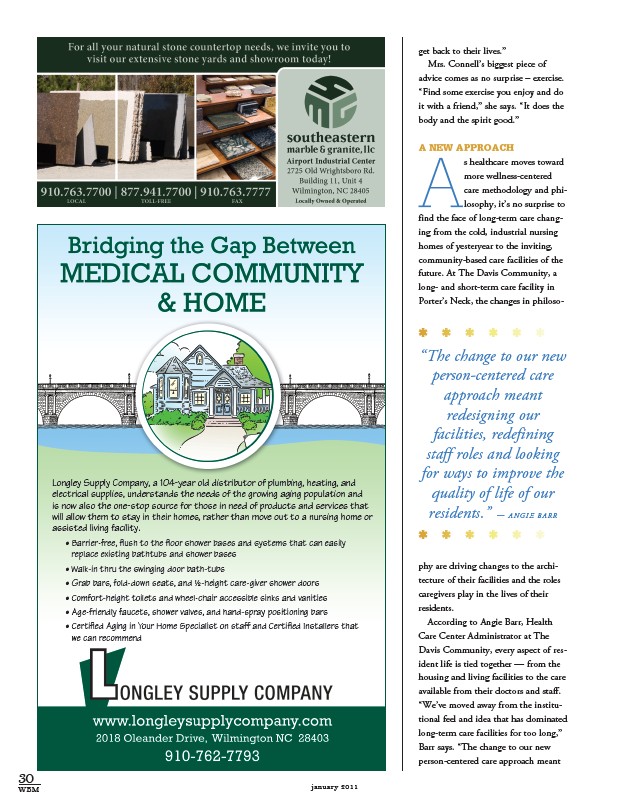
30
WBM january 2011
get back to their lives.”
Mrs. Connell’s biggest piece of
advice comes as no surprise – exercise.
“Find some exercise you enjoy and do
it with a friend,” she says. “It does the
body and the spirit good.”
A New Approach As healthcare moves toward
more wellness-centered
care methodology and phi-losophy,
it’s no surprise to
find the face of long-term care chang-ing
from the cold, industrial nursing
homes of yesteryear to the inviting,
community-based care facilities of the
future. At The Davis Community, a
long- and short-term care facility in
Porter’s Neck, the changes in philoso-phy
are driving changes to the archi-tecture
of their facilities and the roles
caregivers play in the lives of their
residents.
According to Angie Barr, Health
Care Center Administrator at The
Davis Community, every aspect of res-ident
life is tied together — from the
housing and living facilities to the care
available from their doctors and staff.
“We’ve moved away from the institu-tional
feel and idea that has dominated
long-term care facilities for too long,”
Barr says. “The change to our new
person-centered care approach meant
Longley Supply Company, a 104-year old distributor of plumbing, heating, and
electrical supplies, understands the needs of the growing aging population and
is now also the one-stop source for those in need of products and services that
will allow them to stay in their homes, rather than move out to a nursing home or
assisted living facility.
• Barrier-free, flush to the floor shower bases and systems that can easily
replace existing bathtubs and shower bases
• Walk-in thru the swinging door bath-tubs
• Grab bars, fold-down seats, and ½-height care-giver shower doors
• Comfort-height toilets and wheel-chair accessible sinks and vanities
• Age-friendly faucets, shower valves, and hand-spray positioning bars
• Certified Aging in Your Home Specialist on staff and Certified Installers that
we can recommend
“The change to our new
person-centered care
approach meant
redesigning our
facilities, redefining
staff roles and looking
for ways to improve the
quality of life of our
residents.” — Angie Barr